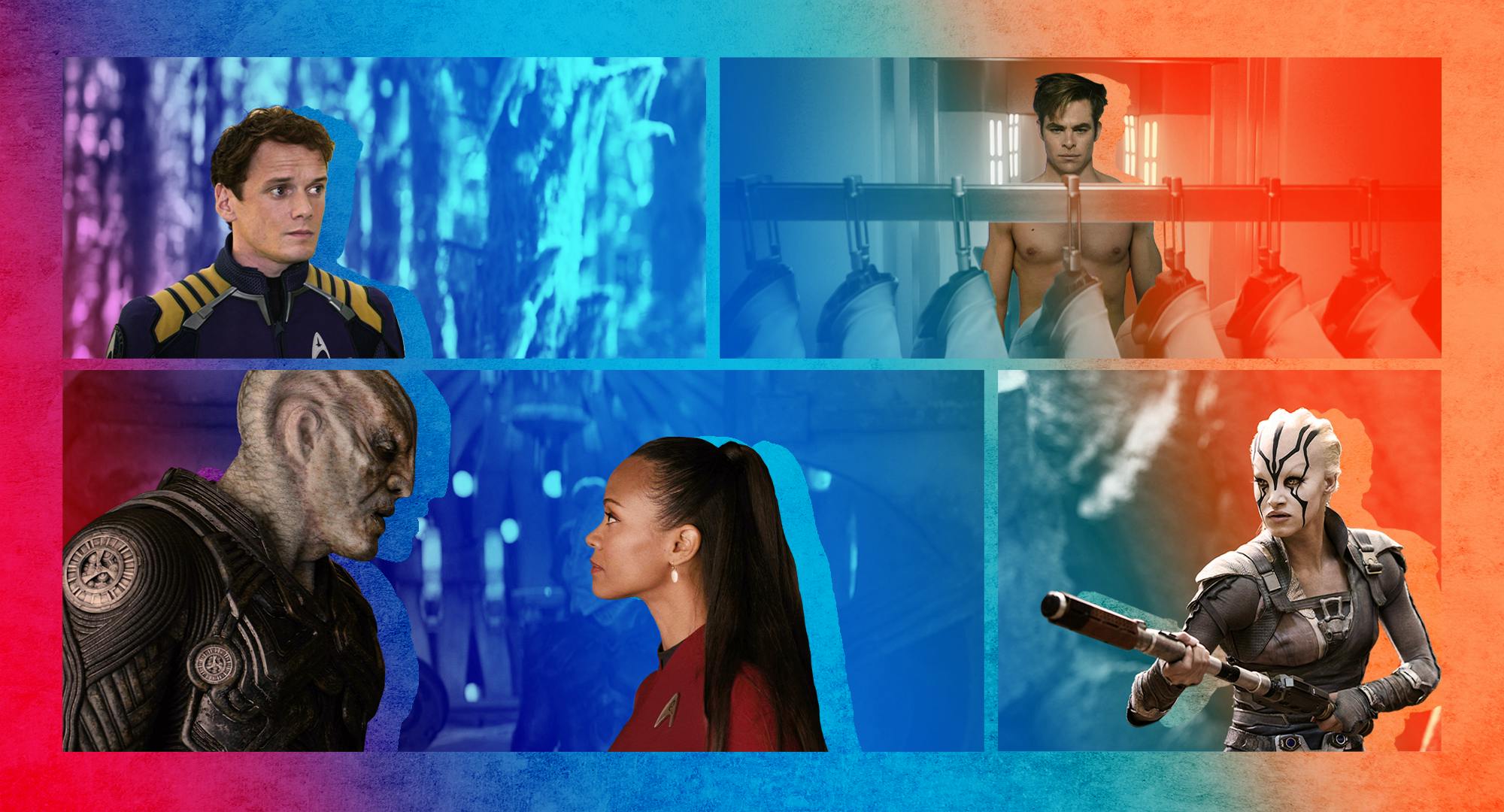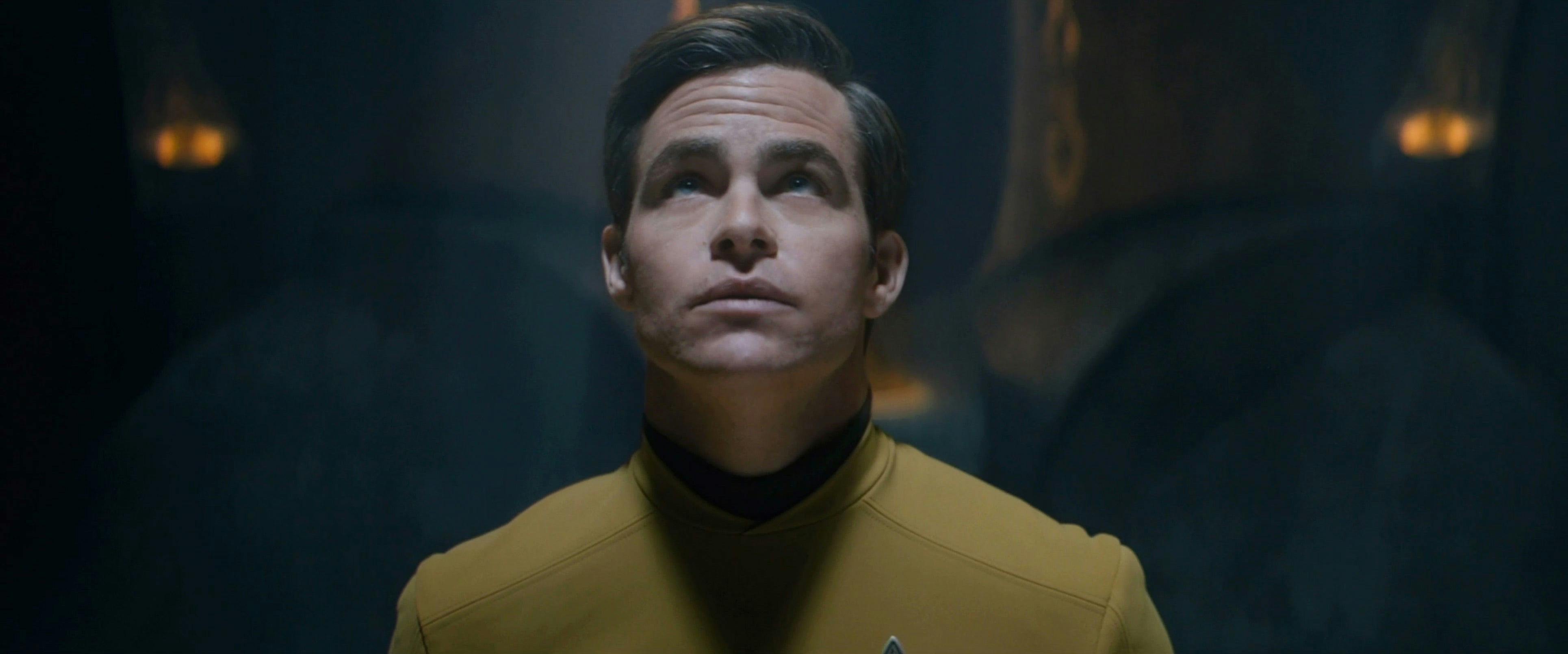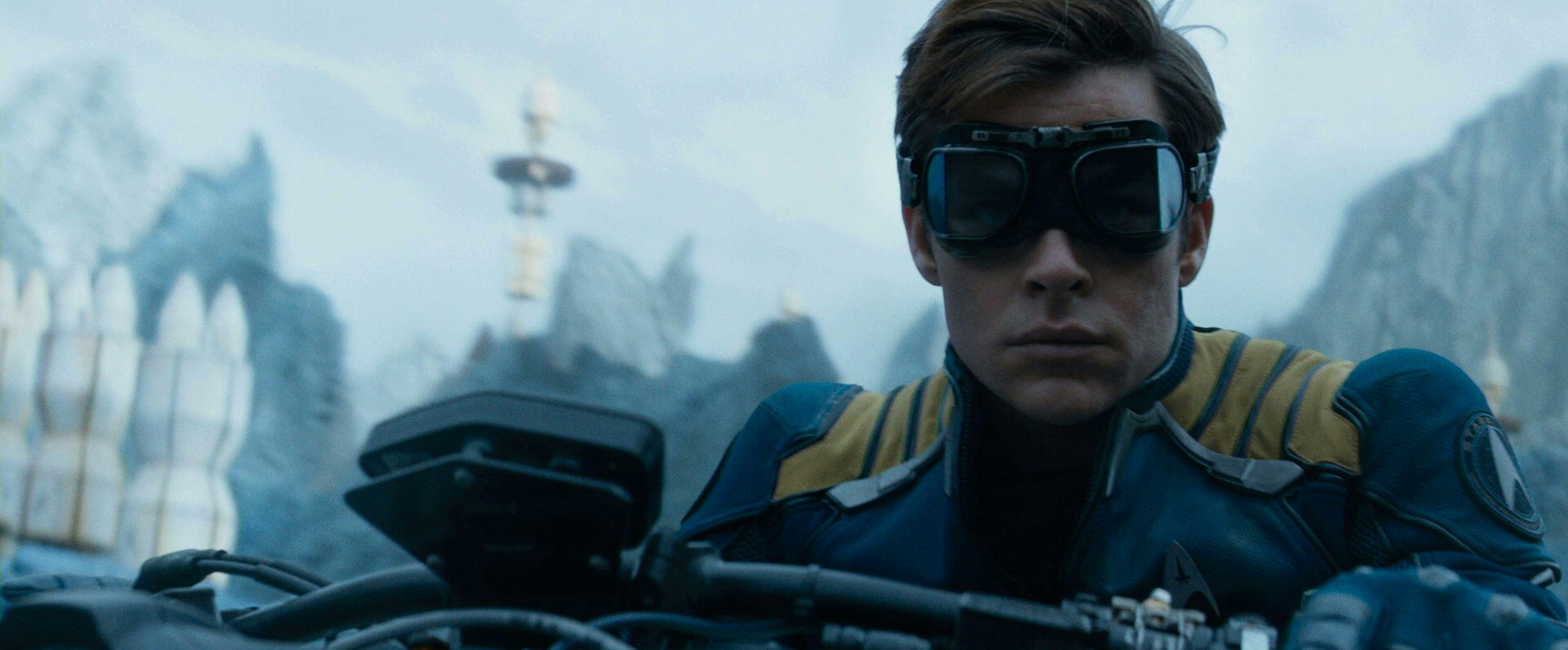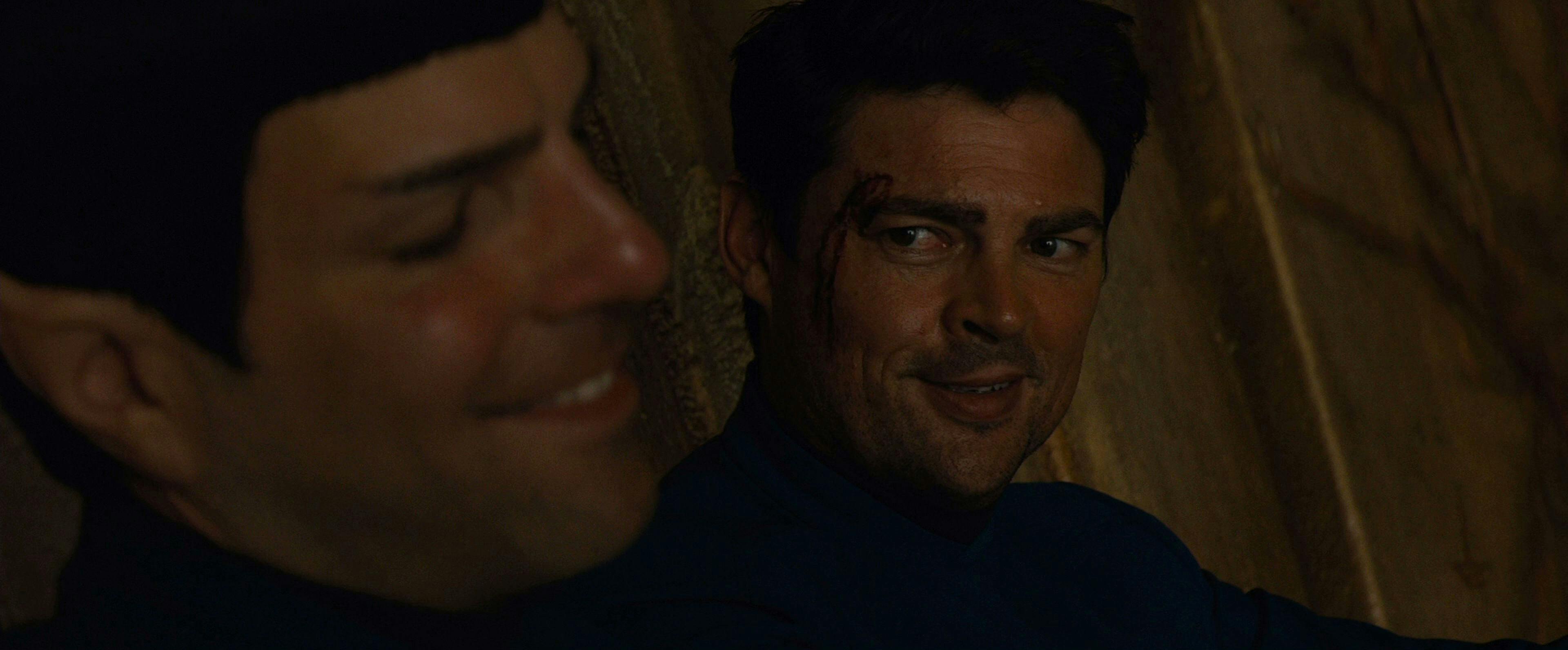Published Jul 22, 2021
How Star Trek Beyond Helps Us Envision Hope During a Pandemic
Five years after its release, Star Trek Beyond boasts newfound relevancy as a beacon of hope in the midst of real-world suffering and disease.

StarTrek.com
This article was originally published on August 19, 2020
In 2009, Star Trek returned to the big screen in bombastic fashion. A black hole, a Romulan interloper, and a desperate escape provide the backdrop for a self-contained Shakespearean tragedy culminating in the birth of one James T. Kirk and the heroic sacrifice of his father - perhaps J.J. Abrams’ finest directorial work. In his follow-up, Star Trek Into Darkness, we’re once again thrown right into the action amid an erupting volcano threatening to destroy an entire planet.
But by the time director Justin Lin took over the captain’s chair for Star Trek Beyond, a fresher approach was needed. True to form, an attempt at interspecies diplomacy gone amusingly wrong segues neatly into a melancholy montage of the U.S.S. Enterprise crew under siege. It’s not another life-or-death crisis they’re grappling with, however, but the vice-like grip of routine and monotony and disillusionment setting in barely halfway through their five-year mission.
At its heart, Star Trek Beyond is about finding oneself mired in a seemingly inescapable — and shockingly ordinary — rut.
To Captain Kirk in particular, his closet of sharply pressed Starfleet uniforms only represents an endless passage of days, one hardly distinguishable from the last. (“Things have started to feel a little… episodic,” he ruefully notes in his Captain’s log.) Familiar milestones marking the turn of the calendar — like an upcoming birthday — have instead become depressive burdens. The final frontier, that formidable yet awe-inspiring sea of possibility and potential teeming with life, has never felt so bleak and empty.
Sound familiar?

StarTrek.com
Through good moments and bad, Star Trek has unwaveringly committed to making sense of current events and recent history. But in a world irrevocably touched by COVID-19, resulting in prolonged stay-at-home orders that have made many of our daily routines frustratingly cyclical, it’s nigh impossible to watch Beyond without gaining a new appreciation for its prophetic abilities as well.
As it turns out, the suggestion by co-writers Simon Pegg and Doug Jung that the Enterprise’s never-ending adventures could reflect the grind of our own lives was slightly ahead of its time. We only had to wait a few more years to truly understand this freshly relevant, quintessentially Star Trek parable: how easily-overlooked everyday joys can keep us centered, grounded, and able to cope with life put on pause by a pandemic.
Out With the Old?

StarTrek.com
Though Star Trek has always aspired to be a forward-looking initiative, it’d be misleading to say it has no use for nostalgia whatsoever. In Star Trek Beyond (by no coincidence released during the franchise’s 50th anniversary), preserving a strong grip on the past proves key several times as characters extricate themselves from impossible situations. The film seems to argue that sometimes, whether it be the Star Trek universe or our new quarantine reality, progress can only occur by maintaining a healthy connection to what came before.
After a too-brief respite at Starfleet’s downright utopian space station Yorktown, Kirk and his crew respond to a distress call in a nearby uncharted nebula. An immediate attack by the villainous Krall’s swarm of drones incapacitates and brings down the Enterprise, itself a nod to time-honored Star Trek tradition of destroying the legacy ship. But what really sets the nostalgic tone is Scotty’s encounter with the similarly stranded alien Jaylah, who soon reveals her hideout to be a centuries-old derelict Starfleet ship (complete with a gloriously throwback musical cameo by Public Enemy’s “Fight the Power”). In the absence of the iconic Enterprise, narrative logic naturally dictates that this ship taken straight from the annals of history should serve as the crew’s eventual salvation in escaping the planet - which it absolutely does.
The standout embodiment of this theme, fittingly enough, comes from another source of nostalgic musing. Of all the items to find on Jaylah’s commandeered ship, Kirk comes across an old-school motorcycle similar to one his dad owned in his youth. Not only does this reconnect Kirk with a legacy he’s still wrestling to come to terms with (his impending birthday is a momentous one, as he explains over drinks with Bones, making Jim one year older than his father ever was), but this idyllic symbol becomes the perfect tool to distract Krall and his minions during a daring prison break. Paired with Jaylah’s advanced hologram tech, this blending of old and new suggests an ideal balance for us to strive for.
As Kirk slowly but steadily regains his identity and purpose throughout Beyond, we’re given an excellent example of how holding onto fond memories of better times can guide us through any current struggle - even one as far-reaching as a global pandemic.
Strength Through Unity

StarTrek.com
Question any Trekkie about the central tenets of this series and, chances are, among the most common answers will be love. Whether it’s romance between star-crossed sweethearts, the unique bond between a Captain and their ship, or simply the familial relationships forged among the crew, the backbone of Star Trek is undeniably rooted in togetherness.
It stands to reason, then, that the film celebrating the franchise’s enduring prominence throughout half a century would require a villain diametrically opposed to the Federation’s core values. Enter Krall, a fearsome alien-like entity nursing a starship-sized grudge against everything Kirk, his crew, and the Starfleet logo on their chests stand for. Never one to waste an opportunity, Krall goads Lieutenant Uhura and her captive mates by tearing apart their ingrained philosophy. “Unity is not your strength,” he spits at Uhura after procuring the film’s plot device, the Abronath weapon, in exchange for Sulu’s life. “It is your weakness.”
Thankfully, Beyond spends much of its runtime proving Krall wrong.
Though split up for much of their duration on Krall’s planet, the heroes repeatedly rely on each other to hasten their eventual reunion in the third act. The clever fragmentation of the cast, combined with the suffocating nature of many long years spent together in space, allows Spock and Bones’ inherently conflicting worldviews to butt heads – emphasized for the first time in this trilogy. This leads to satisfyingly poignant moments where the artifice of their rivalry is stripped away, leaving only the underlying respect and admiration each holds for the other.
Elsewhere, another character pairing also acts as a conduit for this overarching idea. Beyond finally gives Spock and Uhura’s romance room to breathe, even with the early reveal of their breakup. Uhura’s Vulcan necklace, gifted to her by Spock as a token of their love, provides a crucial narrative function in locating her whereabouts and that of the captured crew — an earnest (if unintentionally creepy) display of love literally bringing people together.
What could possibly be a more welcoming message at a time when most of us must resort to staying connected to friends and loved ones through Zoom calls and social media? If love and unity can help save the day in Star Trek Beyond, perhaps those ideals can help us combat the debilitating effects of tedium and isolation in today’s “new normal” as well.
Putting the “Art” in Star Trek

StarTrek.com
In another unfortunate parallel to current events, death and loss hang heavily over Star Trek Beyond. The passing of Leonard Nimoy is respectfully acknowledged in-text, incorporating Ambassador Spock’s death into the storyline and subsequently motivating Spock’s conflicts between Starfleet, Uhura, and his duty to Vulcan-kind. Similarly, Anton Yelchin’s tragic accident post-filming lends weight to his final performance as Ensign Pavel Chekov – in a bittersweet touch, Justin Lin re-edited the concluding scene so that the camera lingers on Yelchin as Kirk calls a familiar toast, “To absent friends.”
So how are we meant to process our world where so much mourning coexists alongside the unique doldrums of quarantine? The answer is as Trek-like as you’d expect: through art itself.
In the ultimate expression of the film’s penchant for marrying theme with action, Beyond reserves its showstopper set piece for a sequence where the singularly effective weapon against hordes of enemies turns out to be… music. Facing an actual tidal wave of Krall’s drones in one last stand, Jaylah hooks up her sound system and by sheer serendipity picks the one song most associated with Kirk’s (alternate timeline) past. With a flick of a switch, Beyond channels every one of its most pressing concerns - upholding reverence for the past where it’s due, remaining united in the face of overwhelming odds, and respecting the inspirational and disruptive potential of art - into blasting the anarchic hip-hop strains of “Sabotage” by the Beastie Boys.
Admiration for the humanities has always stood at the forefront of Star Trek, but rarely has it been so unabashedly joyous, reminding us of the power of art and culture when we need it most.
Lost and Found

StarTrek.com
“It isn't uncommon, you know, even for a captain, to want to leave,” Yorktown’s Commodore Paris empathizes with Kirk early on. “There is no relative direction in the vastness of space. There is only yourself, your ship, your crew. It’s easier than you think to get lost.”
Through Kirk and his extreme foil Krall (ultimately revealed to be Balthazar Edison, former Starfleet captain of the ship Jaylah called home), Beyond can easily be read as an allegory for workplace fatigue, general restlessness and dissatisfaction with life, or the extreme stresses of living under COVID. We might not be likely to jump in a starship and boldly go exploring the cosmos anytime soon, but many of us can relate to feeling empty, meaningless, and lost in a dangerous world infinitely larger than ourselves.
As with all worthy installments of the franchise, Star Trek Beyond acts as a timely reflection of our own experiences. It just so happens that the best (and hopefully not final) film in the current Trek continuity does so by showing us how we can survive and thrive in a once-in-a-generation pandemic… just as long as we do our part by staying inside, socially distancing, and wearing a mask!
Script to Screen - Star Trek Beyond
Jeremy Mathai (he/him) is a burgeoning freelance film writer whose bylines can be found on IGN, SlashFilm, Nerdist, and more. Between indulging in typical New York pizza snobbery, cheering on his beloved Yankees and Rangers, and obsessing over movies (not necessarily in that order), he’s usually wasting time and posting memes on Twitter (@Somthin_Tookish).

